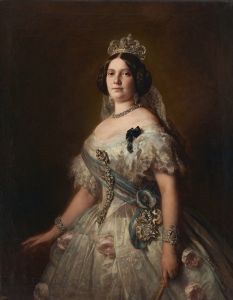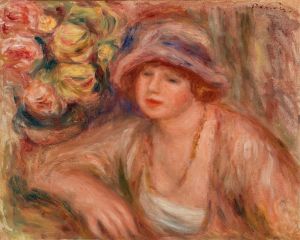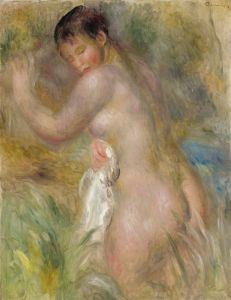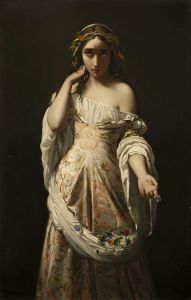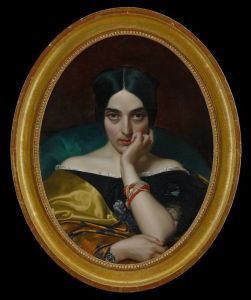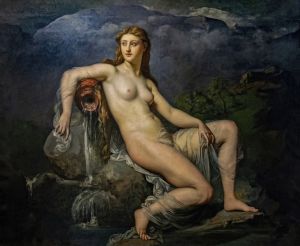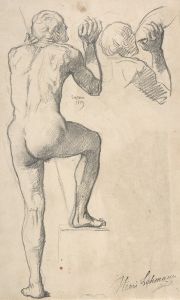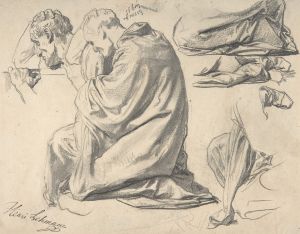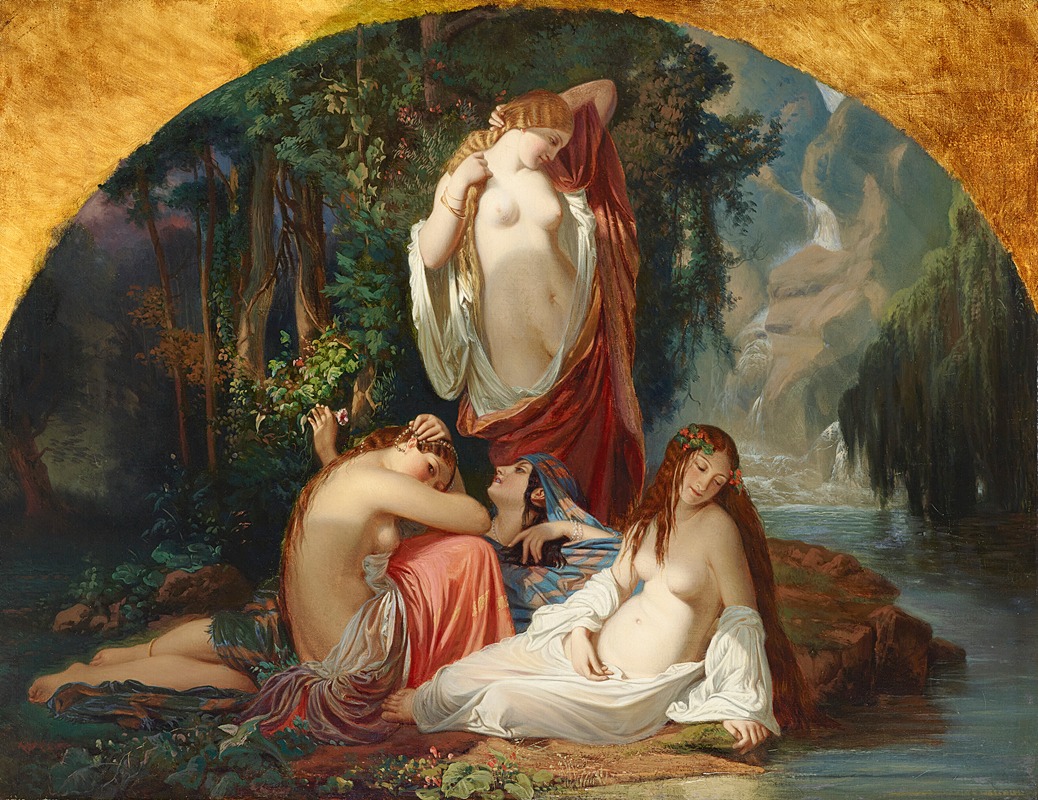
Les baigneuses – Les filles de la source
A hand-painted replica of Henri Lehmann’s masterpiece Les baigneuses – Les filles de la source, meticulously crafted by professional artists to capture the true essence of the original. Each piece is created with museum-quality canvas and rare mineral pigments, carefully painted by experienced artists with delicate brushstrokes and rich, layered colors to perfectly recreate the texture of the original artwork. Unlike machine-printed reproductions, this hand-painted version brings the painting to life, infused with the artist’s emotions and skill in every stroke. Whether for personal collection or home decoration, it instantly elevates the artistic atmosphere of any space.
Henri Lehmann's painting "Les baigneuses – Les filles de la source" is a notable work by the 19th-century French painter, who was known for his contributions to the academic art movement. Lehmann was born in 1814 in Kiel, Germany, and later moved to Paris, where he became a prominent figure in the French art scene. He was a student of the renowned painter Jean-Auguste-Dominique Ingres, whose influence is evident in Lehmann's meticulous attention to detail and classical style.
"Les baigneuses – Les filles de la source" is a fine example of Lehmann's skill in depicting the human form and his ability to convey a sense of serenity and grace. The painting features a group of young women, or "baigneuses," engaged in the act of bathing. This subject was a popular theme in 19th-century art, often used to explore the beauty of the human body and the harmony of nature.
Lehmann's composition is carefully balanced, with the figures arranged in a way that guides the viewer's eye across the canvas. The use of light and shadow enhances the three-dimensionality of the figures, giving them a lifelike presence. The setting, likely a natural spring or secluded pool, provides a tranquil backdrop that complements the peaceful demeanor of the bathers.
The painting reflects the academic style that Lehmann adhered to throughout his career, characterized by its emphasis on idealized beauty, precise draftsmanship, and classical themes. This style was in line with the teachings of his mentor, Ingres, who advocated for a return to the principles of classical art as a counter to the more emotive and less structured approach of Romanticism.
Lehmann's work, including "Les baigneuses – Les filles de la source," was well-received during his lifetime, and he exhibited regularly at the Paris Salon, the official art exhibition of the Académie des Beaux-Arts. His paintings were appreciated for their technical excellence and adherence to the classical tradition, which was highly valued in the academic art circles of the time.
In addition to his work as a painter, Lehmann was also a respected teacher. He taught at the École des Beaux-Arts in Paris, where he influenced a new generation of artists. His commitment to the academic style and his role as an educator helped to perpetuate the classical ideals in French art well into the late 19th century.
"Les baigneuses – Les filles de la source" remains an important work in Lehmann's oeuvre, exemplifying his mastery of form and composition. It serves as a testament to the enduring appeal of classical themes and the human figure in art. While Lehmann may not be as widely recognized today as some of his contemporaries, his contributions to the academic tradition and his influence as a teacher continue to be acknowledged by art historians and enthusiasts alike.
Overall, Henri Lehmann's "Les baigneuses – Les filles de la source" is a significant piece that captures the essence of 19th-century academic painting, with its focus on beauty, harmony, and the timeless elegance of the human form.








